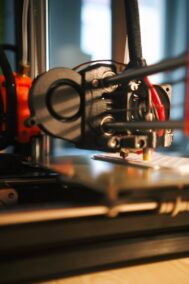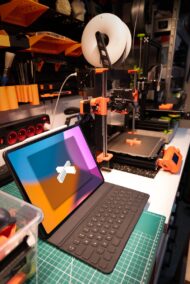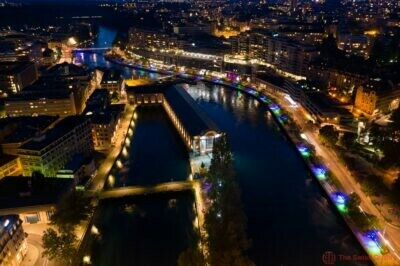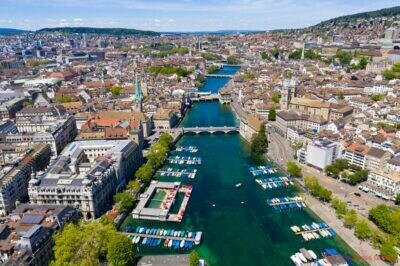The Precision and Detail of 3D Printed Architectural Models
Revolutionizing Architectural Precision with 3D Printing
In recent years, the adoption of 3D printed architectural models has transformed the architecture industry, offering unprecedented accuracy and detail. The integration of 3D printing technology in architectural modeling allows designers to create highly detailed and precise scale models, which are essential for visualizing complex structures. This advancement is particularly significant in rapidly developing regions such as Saudi Arabia and the UAE, where urban landscapes are continually evolving with innovative architectural projects.
The use of 3D printing in architecture provides architects and developers with a tangible representation of their designs, enabling better communication and understanding among stakeholders. This technology ensures that every element of the model is produced with exact specifications, significantly reducing the margin for error. In cities like Riyadh and Dubai, where cutting-edge architectural projects are constantly emerging, the ability to produce detailed and accurate models is invaluable for project planning and execution.
Moreover, 3D printed models facilitate the identification and resolution of potential design issues early in the project lifecycle. This proactive approach not only enhances the overall quality of the architectural design but also contributes to more efficient project management. By leveraging the capabilities of 3D printing, architects can experiment with complex geometries and intricate details that would be challenging to achieve with traditional modeling methods.
The Role of 3D Printing in Sustainable Architecture
Sustainability is a critical concern in modern architecture, and 3D printing technology plays a pivotal role in promoting environmentally friendly design practices. By utilizing 3D printed architectural models, architects can minimize material waste and optimize resource usage. This is particularly relevant in the Middle East, where sustainable development is a top priority due to the region’s unique environmental challenges.
3D printing allows for the precise production of architectural components, reducing the need for excess materials and minimizing construction waste. In addition, the ability to create detailed models enables architects to explore and implement innovative sustainable design solutions. For instance, designers can use 3D printed models to test the effectiveness of energy-efficient building materials and green technologies, ensuring that their projects meet high sustainability standards.
In cities like Riyadh and Dubai, where sustainability initiatives are increasingly emphasized, 3D printed architectural models are instrumental in achieving eco-friendly design objectives. By incorporating 3D printing into their workflow, architects can develop more sustainable buildings that contribute to the overall well-being of the environment and the community. This technology not only supports the creation of greener buildings but also fosters a culture of innovation and environmental stewardship within the architectural industry.
Impact of 3D Printed Architectural Models on Business Success
The adoption of 3D printed architectural models has far-reaching implications for business success in the architecture and construction sectors. For business executives, mid-level managers, and entrepreneurs, the ability to present highly accurate and detailed models can significantly enhance client satisfaction and project approval rates. In competitive markets such as Saudi Arabia and the UAE, where architectural excellence is a key differentiator, the precision offered by 3D printing can be a decisive factor in winning new projects and securing client trust.
Effective communication is essential for successful project management, and 3D printed models serve as powerful tools for conveying complex design concepts to clients and stakeholders. These models provide a clear and tangible representation of the final product, facilitating better understanding and alignment among all parties involved. This improved communication leads to more informed decision-making and smoother project execution, ultimately driving business success.
Furthermore, the integration of 3D printing technology into architectural practices can lead to significant cost savings and efficiency gains. By reducing the time and resources required for traditional model-making, businesses can streamline their operations and allocate resources more effectively. In dynamic markets like Riyadh and Dubai, where project timelines are often tight, the ability to produce accurate models quickly and efficiently can provide a competitive edge and enhance overall profitability.
Executive Coaching Services for Leveraging 3D Printing in Architecture
To maximize the benefits of 3D printed architectural models, businesses must invest in executive coaching services that focus on the effective implementation and utilization of this technology. Executive coaching can provide valuable insights and strategies for integrating 3D printing into architectural workflows, ensuring that business leaders are well-equipped to leverage this technology to its full potential.
Coaching services can help executives and managers understand the technical aspects of 3D printing and its applications in architecture. This knowledge is crucial for making informed decisions about technology investments and for guiding teams in the adoption of new practices. In regions like Saudi Arabia and the UAE, where the architectural landscape is rapidly evolving, executive coaching can ensure that businesses remain at the forefront of innovation and maintain a competitive edge.
Additionally, executive coaching can support the development of leadership and management skills necessary for driving successful technology integration. Effective leadership is essential for fostering a culture of innovation and for managing the changes that come with the adoption of new technologies. By investing in executive coaching, businesses can empower their leaders to navigate the complexities of technology-driven transformation and to achieve sustainable growth.
Future Trends: AI, Blockchain, and the Metaverse in Architecture
The future of architecture is being shaped by emerging technologies such as Artificial Intelligence (AI), Blockchain, and the Metaverse. These innovations, combined with 3D printing, are poised to revolutionize the way architectural projects are designed, managed, and executed. In the Middle East, where cities like Riyadh and Dubai are at the forefront of technological adoption, these trends are particularly relevant.
AI can enhance the design process by providing advanced analytics and predictive modeling, enabling architects to create more efficient and optimized buildings. Blockchain technology offers transparency and security in project management, ensuring that all stakeholders have access to accurate and immutable records. The Metaverse, a virtual reality space, allows for immersive design experiences and real-time collaboration, further enhancing the capabilities of 3D printed architectural models.
As these technologies continue to evolve, their integration with 3D printing will open up new possibilities for the architecture industry. Architects and developers in Saudi Arabia and the UAE must stay informed about these trends and invest in the necessary tools and skills to harness their potential. By embracing these innovations, businesses can drive architectural excellence and achieve long-term success in a competitive global market.
Conclusion: Embracing 3D Printed Architectural Models for Business Growth
In conclusion, the adoption of 3D printed architectural models offers numerous benefits for the architecture industry, particularly in regions like Saudi Arabia and the UAE. This technology enhances precision and detail, promotes sustainability, and supports business success through improved communication and efficiency. By investing in executive coaching services and staying abreast of emerging trends, businesses can fully leverage the potential of 3D printing and achieve sustained growth in a dynamic and competitive market.
The future of architecture is bright, with 3D printing paving the way for innovative and sustainable design practices. As the industry continues to evolve, embracing new technologies and fostering a culture of continuous improvement will be essential for maintaining a competitive edge. For business executives, mid-level managers, and entrepreneurs, the key to success lies in harnessing the power of 3D printed architectural models and driving forward the next wave of architectural innovation.
#3DPrintedArchitecturalModels #3DPrintingInArchitecture #ArchitecturalPrecision #SustainableArchitecture #MiddleEastArchitecture #ExecutiveCoaching #EmergingTechnologiesInArchitecture






















